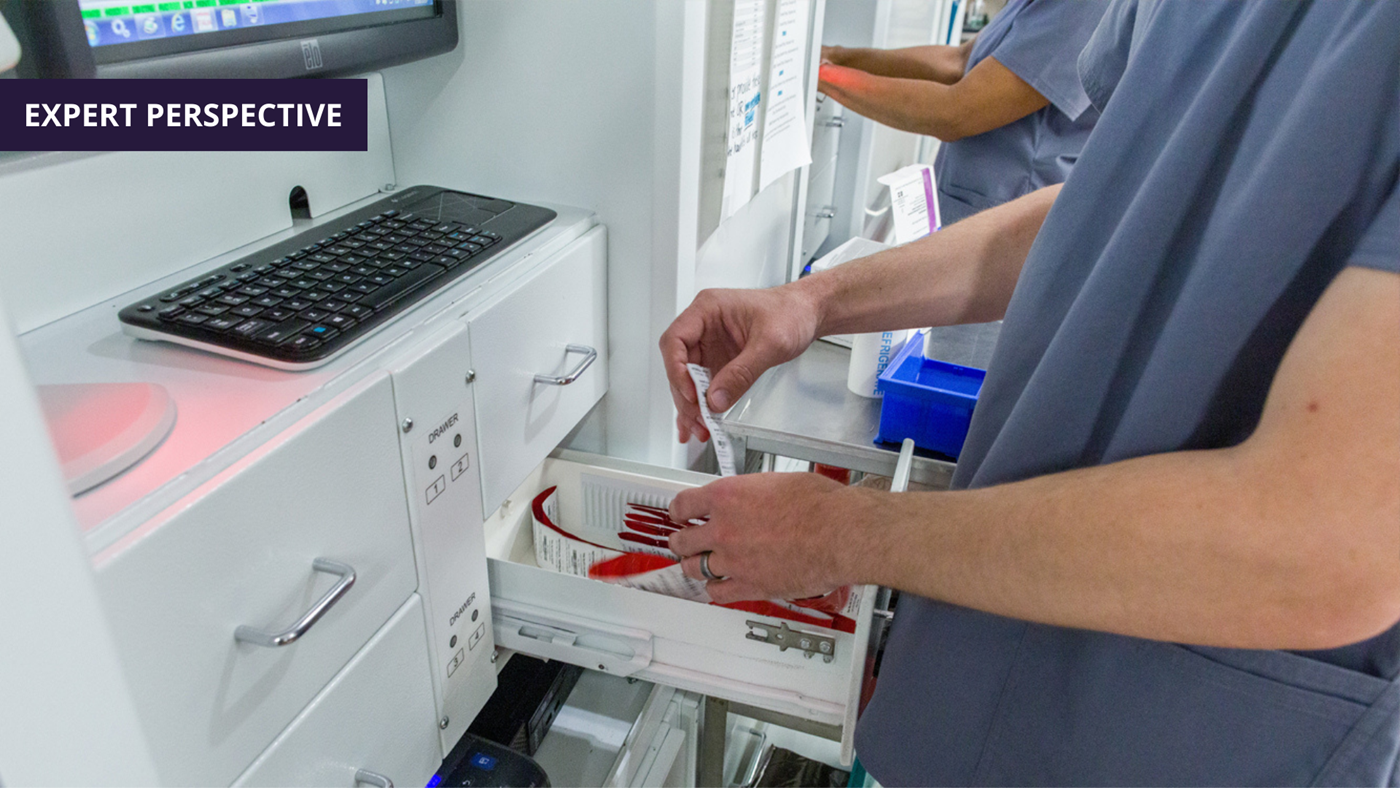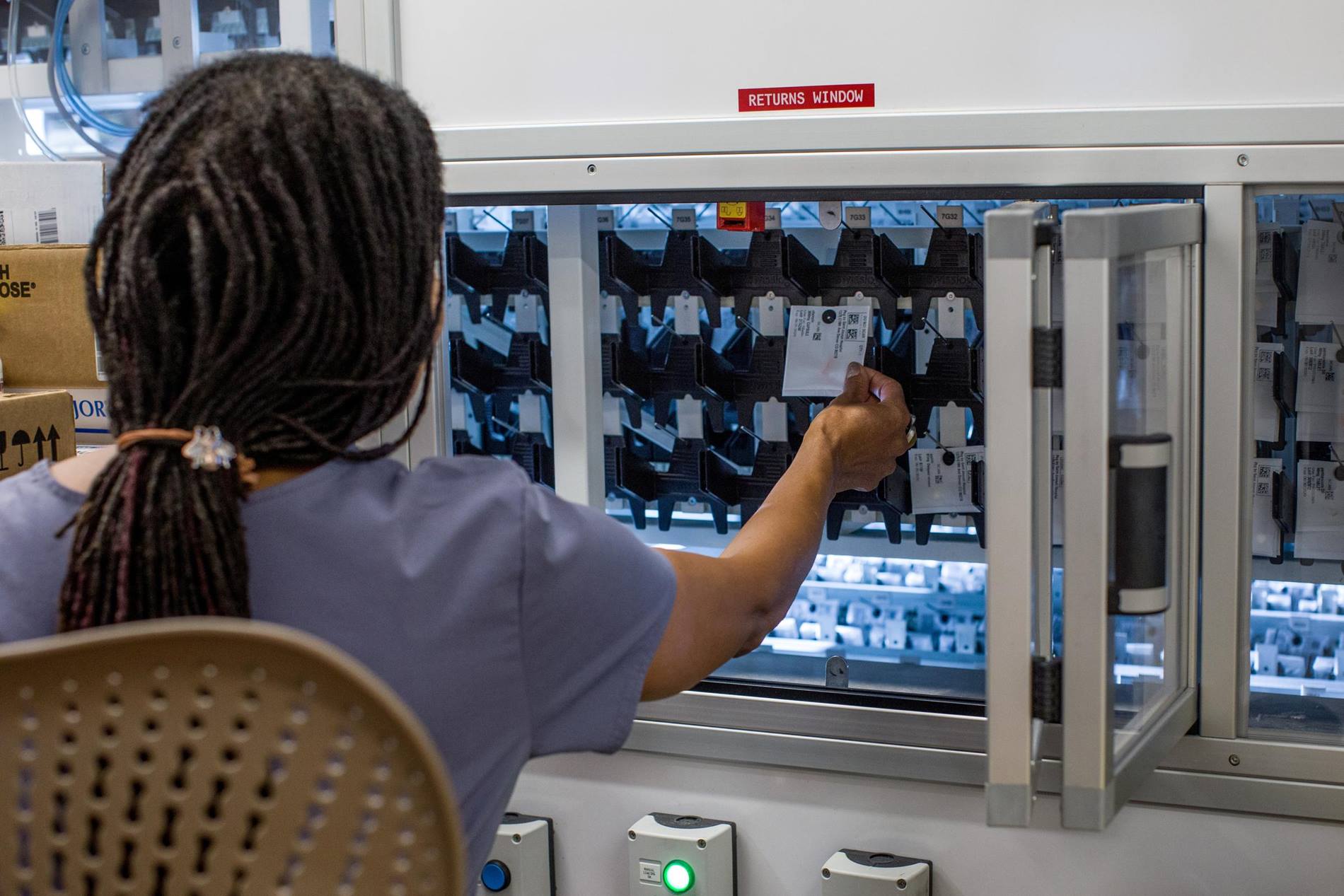Lack of Pharmacy Automation Can Be Costly

Pharmacy Automation Today
A recent report published by Allied Market Research estimates that the global pharmacy automation system market is projected to grow to $11.21 billion by 2030. And, according to a market assessment from PharmWeb, leading the growth is the hospital pharmacy market.
Hospital pharmacy automation encompasses several areas, including several identified by the Pharmacy Times as follows:
- Automated robotics that handle vial-filling and packaging of medication.
- RFID-enabled retrieval and storage cabinets.
- Software that streamlines workflow and provides greater visibility over inventory and dispensation.
- Analytics that include artificial intelligence (AI) technology that helps pharmacists identify possible hazards and medications discrepancies in advance.
Automation solves several challenges for hospitals. First and foremost is the need to increase medication safety, an area which has always been a major concern for hospitals as they strive to improve patient outcomes and provide value-based care. It is also seen as a solution to help hospitals address staffing challenges through process automation. In essence, hospital pharmacy automation helps to optimize the time and efforts of valuable staff. Finally, it is the evolution of the technology itself, especially in areas such as AI that is driving increased interest in automation.
Lack of Automation Is a Growing Liability For Hospitals
Those who continue to rely upon manual methods to operate their pharmacies may find themselves paying more in the long run, as hospital pharmacy automation technologies improve and help pharmacies save time, effort, reduce waste and improve accuracy of medications dosages for patients.
Here are five key areas where a lack of hospital pharmacy automation can quickly become costly:
- Higher labor costs. The manual process of organizing, sorting, packaging, and storing medications can take up to 55% of pharmacy staff time. Pharmacy automation replaces most of the tedious manual process and frees up employees to focus on higher value tasks. In one study, cited in the National Library of Medicine, pharmacists were able to save over 46 minutes per 100 prescription fills by using robotic dispensing systems.
- Medications waste. Hospital pharmacies that do not have automated storage and dispensing systems will continue to experience needless medications waste. A good example of this is drawing from a vial. If a technician draws only 2 grams out of a 10-gram vial, prior to automation the remaining portion would need to be disposed of. Automation helps maintain sterility of the solution so that it can be used again.
- Medications errors. Medication errors in hospitals can have a severe impact on patient health and safety. According to the Harvard Business Review, every year over a million patients are harmed by medication errors in hospitals. Furthermore, they can cost hospitals millions of dollars between taking corrective action and dealing with legal repercussions. Research has indicated that using automation can substantially mitigate errors in medications management including dosage and dispensation errors. Automating these processes enables pharmacists to put more attention on overall management of the pharmacy and staff.
- Loss of efficiency. Processes that are not automated will continue to impair hospital pharmacy operational efficiency. Continuing to manually handle the many processes involved in medications management will impact the hospital’s ability to optimize the use of employees and provide high level care to patients. It will also hinder their ability to move forward with new initiatives.
- Employee turnover. Hospital pharmacists are increasingly reporting symptoms of burnout among pharmacy staff. In a recent Becker’s Hospital Review dealing with drug shortages, increased workload and administrator demands mean they have to achieve more with less staff. Being forced to take on more work while handling repetitive tasks manually can lead to burn-out which will manifest itself in higher turnover as reported by Pharm News Intel. Today’s pharmacists and technicians are not only more tech savvy but are aware of the benefits of pharmacy automation in their daily work. They will look for employment opportunities with hospitals that have taken steps to automate processes.

Pharmacy Automation Has a Powerful Ripple Effect
It is important to note that by continuing to use outdated processes instead of deploying automation to address the above challenges, the hospital’s reputation can be negatively impacted. That is serious in a world of growing competition between health care organizations. Building brand and maintaining a solid reputation is critical as hospitals compete to break apart old models and replace them with environments that focus on wellness for both patients and employees.
Consumer expectations must also be considered. Today’s consumers have choices, and they know it. They are now able to decide which critical care facility they prefer. And, because they are more tech savvy themselves, they expect automation in all areas of their lives. That includes healthcare.
Now Is The Time to Automate
Today’s hospitals continue to struggle with lingering issues resulting from the pandemic as well as changing industry expectations which include the need to serve more patients, more efficiently and in new patient-centric ways. Margins are thin and staffing continues to be at sub-optimum levels. The pharmacy is no exception.
Becker’s Hospital Review cites a study of almost 1,500 hospital pharmacy leaders conducted by the ASHP. In that American Society of Health-System Pharmacists report it was found that over 60% of hospitals are understaffed in their pharmacies.
Here are more findings from the review that should be concerning to hospital leadership:
- Almost three in four of those surveyed reported that they do not have sufficient entry-level pharmacy technicians.
- 57% report that they are short candidates for managerial roles.
- A report from the American Pharmacists Association reported four out of ten negative reports when asked about working conditions.
The challenges articulated through these findings should be a wake-up call for hospital pharmacy leaders who continue to operate using outdated tools and processes. Not only will it be costly, but it will also keep hospitals sidelined by those hospital leaders who lean in to change and innovation.
The technologies are there to take the burden of conducting tedious, time-consuming tasks off the backs of pharmacists and pharmacy technicians. Now is the time to take advantage of them.








